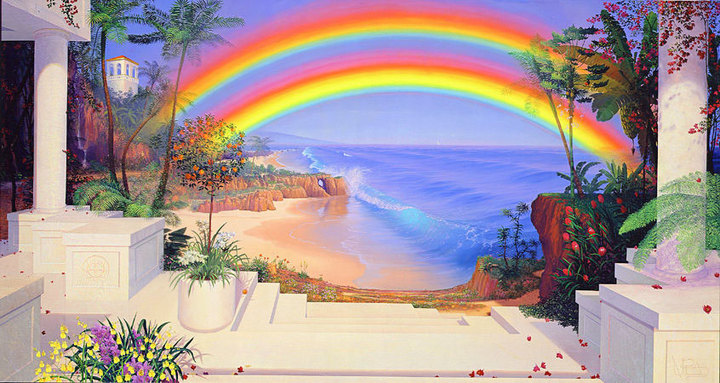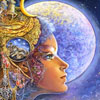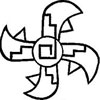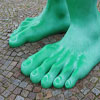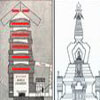The Lost Continent Of Mu
The record of the destruction of Mu, the Motherland of Man, is a strange one indeed. From it we learn how the mystery of the white races in the South Sea Islands may be solved and how a great civilization flourished in mid-Pacific and then was completely obliterated in almost a single night. A few decades ago scientists would have 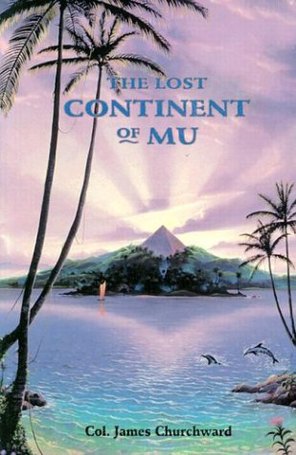 been very doubtful about the possibility of the former existence in the Pacific Ocean of a huge continent such as Mu. But since then, records have come to light and comparisons have been made which prove that such a land did at one time exist. The proofs are of several types.
been very doubtful about the possibility of the former existence in the Pacific Ocean of a huge continent such as Mu. But since then, records have come to light and comparisons have been made which prove that such a land did at one time exist. The proofs are of several types.
First, as I have already explained in the opening chapter, there are the sacred tablets found in an Indian temple and deciphered with the aid of a learned priest. These tablets gave me the first hint about Mu and sent me on a world-wide search. They had been written by the Naacals, either in Burma or in the motherland. They told how the Naacals had originally come from the motherland, the land in the center of the Pacific. They also told the story of the creation of man and his advent in this land. Records of later date written in Mayax, Egypt and India tell and describe the destruction of this land of Mu, when the earth’s crust was broken up by earthquakes and sank into a fiery abyss. Then the waters of the Pacific rolled in over her, leaving only water where once was a mighty civilization.
Second, there is confirmation of Mu in other ancient manuscripts, including such a classic as the Hindu epic Ramayana, written by the sage and historian, Valmiki, from the dictation of Narana, high priest of the Rishi temple at Ayhodia, who read the ancient temple records to him. In one place Valmiki mentions the Naacals as “coming to Burma from the land of their birth in the East,” that is, in the direction of the Pacific Ocean. Another document confirming the story of the sacred tablets and Valmiki is the Troano Manuscript, now in the British Museum. This is an ancient Maya book written in Yucatan. It speaks of the “Land of Mu” using for Mu the same symbols we find in India, Burma and Egypt. Another reference is the Codex Cortesianus, a Maya book of about the same age as the Troano Manuscript. Then there is the Lhasa Record, with hundreds of others from Egypt, Greece, Central America, Mexico, and the cliff writings in our western states.
Third, there are existing ruins which, by their location and the symbols that decorate them, tell of the lost continent of Mu, Motherland of Man.
On some of the South Sea Islands, notably Easter, Mangaia, Tonga-tabu, Panape, and the Ladrone or Mariana Islands, there stand today vestiges of old stone temples and other lithic remains that take us back to the time of Mu. At Uxmal, in Yucatan, a ruined temple bears inscriptions commemorative of the “Lands of the West, whence we came”; and the striking Mexican pyramid southwest of Mexico City, according to its inscriptions, was raised as a monument to the destruction of these same “Lands of the West.”
Fourth, there is the universality of certain old symbols and customs discovered in Egypt, Burma, India, Japan, China, South Sea Islands, Central America, South America and some of the North American Indian tribes and other seats of ancient civilizations. These symbols and customs are so identical it is certain they came from one source only–Mu. With this background, then, we can follow the tale of Mu’s destruction.
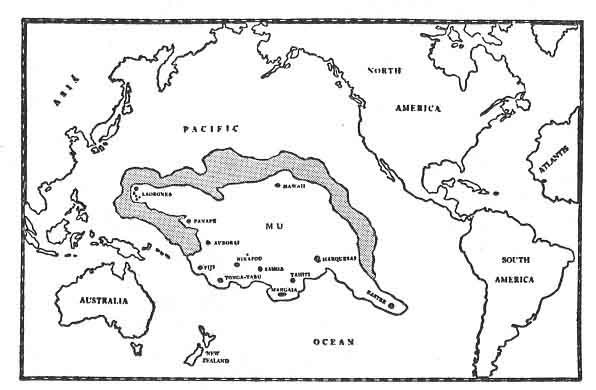 This continent, we find, was a vast stretch of rolling country, extending from north of Hawaii down towards the south. A line between Easter Island and the Fijis formed its southern boundary. It was over 5000 miles from east to west, and over 3000 miles from north to south. The continent consisted of three areas of land, divided from each other by narrow channels or seas.
This continent, we find, was a vast stretch of rolling country, extending from north of Hawaii down towards the south. A line between Easter Island and the Fijis formed its southern boundary. It was over 5000 miles from east to west, and over 3000 miles from north to south. The continent consisted of three areas of land, divided from each other by narrow channels or seas.
Basing my description on the records shown, I shall try to picture her as she was.
Back, far back, into very remote times–many, many thousands of years ago, yet on the very edge of what we call historical times–there was a great continent in the middle of the Pacific Ocean where now “we find only water and the sky,” and groups of small islands, which today are called the South Sea Islands.
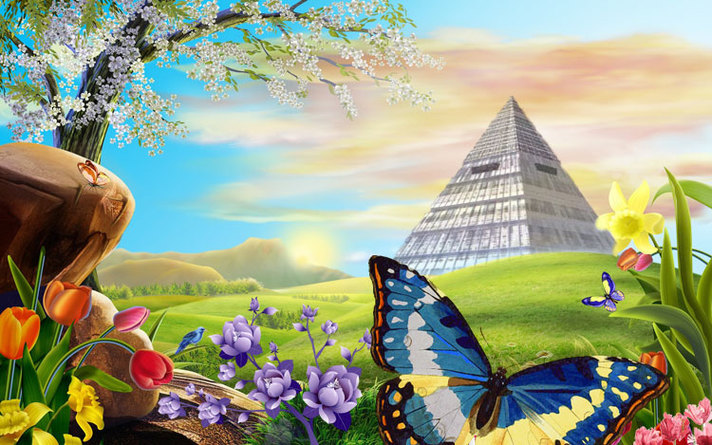 It was a “beautiful” tropical country with “vast plains.” The valleys and plains were covered with rich grazing grasses and tilled fields, while the “low rolling hill lands” were shaded by luxuriant growths of tropical vegetation. No mountains or mountain ranges stretched themselves through this earthly paradise, for mountains had not yet been forced up from the bowels of the earth.
It was a “beautiful” tropical country with “vast plains.” The valleys and plains were covered with rich grazing grasses and tilled fields, while the “low rolling hill lands” were shaded by luxuriant growths of tropical vegetation. No mountains or mountain ranges stretched themselves through this earthly paradise, for mountains had not yet been forced up from the bowels of the earth.
The great rich land was intersected and watered by many broad, slow-running streams and rivers, which wound their sinuous ways in fantastic curves and bends around the wooded hills and through the fertile plains.
Luxuriant vegetation covered the whole land with a soft, pleasing, restful mantle of green. Bright and fragrant flowers on tree and shrub added coloring and finish to the landscape. Tall fronded palms fringed the ocean’s shores and lined the banks of the rivers for many a mile inland. Great feathery ferns spread their long arms out from the river banks. In valley places where the land was low, the rivers broadened out into shallow lakes, around whose shores myriads of sacred “lotus flowers” dotted the glistening surface of the water, like varicolored jewels in settings of emerald green.
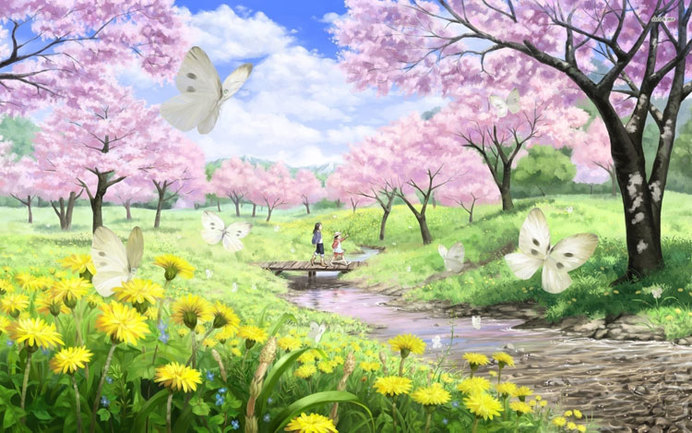 Over the cool rivers, gaudy-winged butterflies hovered in the shade of the trees, rising and falling in fairy-like movements, as if better to view their painted beauty in nature’s mirror. Darting hither and thither from flower to flower, hummingbirds made their short flights, glistening like living jewels in the rays of the sun.
Over the cool rivers, gaudy-winged butterflies hovered in the shade of the trees, rising and falling in fairy-like movements, as if better to view their painted beauty in nature’s mirror. Darting hither and thither from flower to flower, hummingbirds made their short flights, glistening like living jewels in the rays of the sun.
Feathered songsters in bush and tree vied with each other in their sweet lays.
The chirpings of lively crickets filled the air, while above all other sounds came those of the locust as he industriously “ground his scissors,” telling the whole world all was well with him.
Roaming through the primeval forests were herds of “mighty mastodons and elephants” flapping their big ears to drive off annoying insects.
The great continent was teeming with gay and happy life over which “64,000,000 human beings” reigned supreme. All this life was rejoicing in its luxuriant home.
Broad “smooth roads” ran in all directions “like a spider’s web,” the stones with which they were made being so perfectly matched that grasses could not grow between them.”
At the time narrated, the 64,000,000 people were made up of “ten tribes” or “peoples,” each distinct from the other, but all under one government. Many generations before, the people had selected a king and added the prefix Ra to his name. He then became the hieratical head and emperor under the name “Ra Mu.” The empire received the name “Empire of the Sun.”
All followed the same religion, a worship of the Deity through symbols. All believed in the immortality of the soul, which soul eventually returned to the “great source” whence it came.
So great was their reverence for the Deity they never spoke His name, and in prayer and supplication addressed Him always through a symbol. “Ra the Sun” was used as the collective symbol for all His attributes.
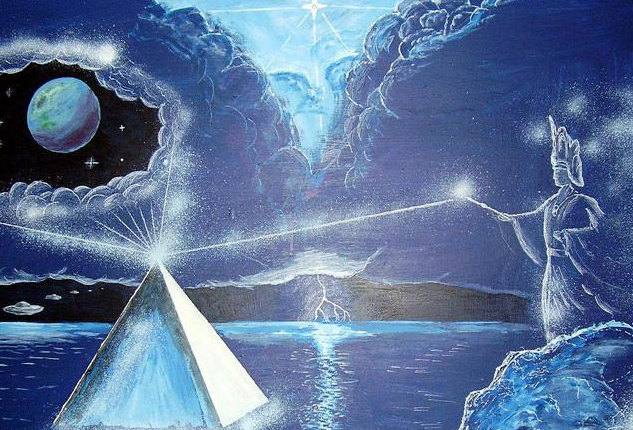 As high priest, Ra Mu was the representative of the Deity in religious teachings. It was thoroughly taught and understood that Ra Mu was not to be worshiped, as he was only representative.
As high priest, Ra Mu was the representative of the Deity in religious teachings. It was thoroughly taught and understood that Ra Mu was not to be worshiped, as he was only representative.
At this time the people of Mu were highly civilized and enlightened. There was no savagery on the face of the earth, nor had there ever been, since all the people on earth were children of Mu and under the suzerainty of the motherland.
The dominant race in the land of Mu was a white race, exceedingly handsome people, with clear white or olive skins, large, soft, dark eyes and straight black hair. Besides this white race, there were other races, people with yellow, brown or black skins. They, however, did not dominate. These ancient inhabitants of Mu were great navigators and sailors who took their ships over the world “from the eastern to the western oceans and from the northern to the southern seas. . . . They were also learned architects, building great temples and palaces of stone.” They carved and set up great monoliths as monuments.
In the land of Mu there flourished seven great or principal cities, the seats of religion, science and learning. There were many other large cities, towns and villages scattered throughout the three lands.
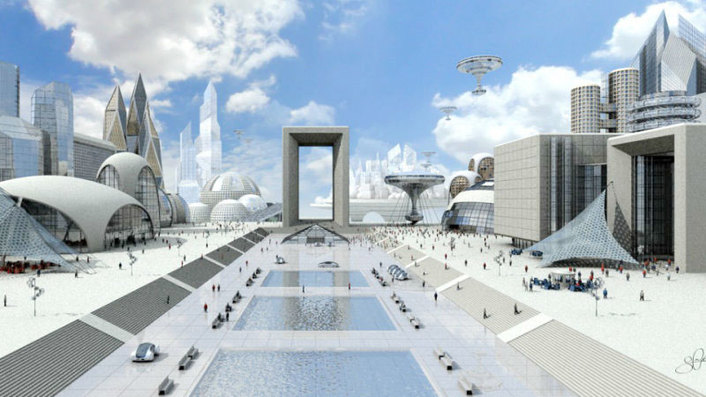 Many cities were built at or near the mouths of the great rivers, these being the seats of trade and commerce, whence ships passed to and from all parts of the world. The land of Mu was the mother and the center of the earth’s civilization, learning, trade and commerce; all other countries throughout the world were her colonies or colonial empires.
Many cities were built at or near the mouths of the great rivers, these being the seats of trade and commerce, whence ships passed to and from all parts of the world. The land of Mu was the mother and the center of the earth’s civilization, learning, trade and commerce; all other countries throughout the world were her colonies or colonial empires.
According to records, inscriptions and traditions, man’s advent on earth was in the land of Mu and on this account the name “land of Kui” was added to that of Mu. Great carved stone temples without roofs, sometimes called “transparent” temples, adorned the cities; the rooflessness being to permit the rays of Ra to fall on the heads of those in supplication and prayer, a symbol of acknowledgment by the Deity. “The wealthy classes adorned themselves in fine raiment with many jewels and precious stones. They lived in imposing palaces attended by many servants.”
Colonies had been started in all parts of the earth.
Being great navigators, their ships were constantly carrying passengers and merchandise to and from the various colonies.
On cool evenings might be seen pleasure ships, filled with gorgeously dressed, jewel-bedecked men 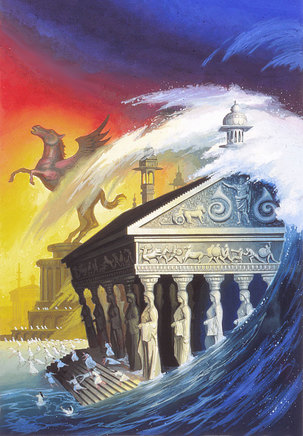 and women. The long sweeps with which these ships were supplied gave a musical rhythm to the song and laughter of the happy passengers.
and women. The long sweeps with which these ships were supplied gave a musical rhythm to the song and laughter of the happy passengers.
While this great land was thus at its zenith, center of the earth’s civilization, learning, trade and commerce, with great stone temples being erected, and huge statues and monoliths set up, she received a rude shock; a fearful visitation overtook her.
Rumblings from the bowels of the earth, followed by earthquakes and volcanic outbursts, shook up her southern parts. Along the southerly shores great cataclysmic waves from the ocean rolled in over the land, and many fair cities went down to destruction. The volcanoes belched out their fire, smoke and lava. The country being flat, the lava did not run, but piled up, forming cones which subsequently became igneous rocks, and are to be seen today on some of the southern islands. Eventually the volcanic workings ceased. The volcanoes died out, and have since remained silent. After the cessation of these volcanic workings, the people of the land, of Mu gradually overcame their fright.
The ruined cities were rebuilt and trade and commerce were resumed.
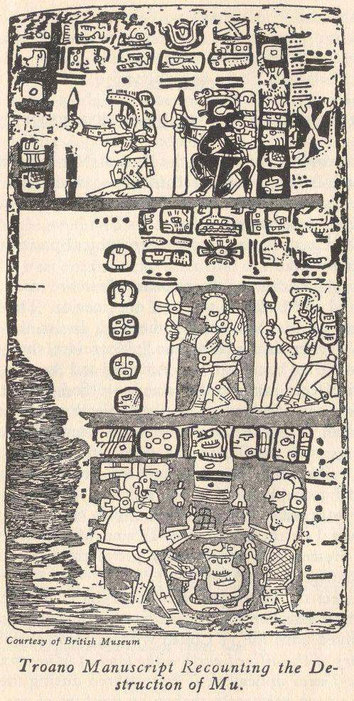 Many generations after this visitation, and when the phenomenon had become past history, Mu again became the victim of earthquakes. “The whole continent heaved and rolled like the ocean’s waves. The land trembled and shook like the leaves of a tree in a storm. Temples and palaces came crashing to the ground and monuments and statues were overturned. The cities were heaps of ruins.”
Many generations after this visitation, and when the phenomenon had become past history, Mu again became the victim of earthquakes. “The whole continent heaved and rolled like the ocean’s waves. The land trembled and shook like the leaves of a tree in a storm. Temples and palaces came crashing to the ground and monuments and statues were overturned. The cities were heaps of ruins.”
As the land rose and fell, quivered and shook, the fires of the underneath burst forth, piercing the clouds in roaring flames three miles in diameter. There they were met by lightning shafts which filled the heavens. A thick black pall of smoke overshadowed the land. “Huge cataclysmic waves rolled in over the shores and extended themselves over the plains.” Cities and all things living went down to destruction before them. “Agonizing cries of the multitude filled the air. The people sought refuge in their temples and citadels only to be driven out by fire and smoke, and the women and the men in their shining garments and precious stones cried: ‘Mu save us!’ ”
As the setting sun showed itself on the horizon beneath the pall of smoke that overhung the whole land, it was like a ball of fire, red and angry looking. When it had sunk below the horizon, intense darkness prevailed, relieved only by lightning flashes.
“During the night” Mu was torn asunder and rent to pieces. With thunderous roarings the doomed land sank. Down, down, down, she went, into the mouth of hell–“a tank of fire.” As the broken land fell into that great abyss of fire, “flames shot up around and enveloped her.” The fires claimed their victim. “Mu and her 64,000,000 people were sacrificed.”
As Mu sank into the fiery gulf, another force claimed her–fifty million square miles of water. From all sides the huge waves came rolling in. They met where once was the center of the land. Here they seethed and boiled.
Mu, the Motherland of Man, with all her proud cities, her temples and palaces, her arts, sciences and learning, was now a dream of the past. The blanket of water was her burial shroud. The continent’s catastrophe was the first step in the destruction of the earth’s first great civilization.
For nearly 13,000 years Mu’s destruction cast a heavy pall over the greater part of the earth. The pall is being lifted, but many spots still lie covered.
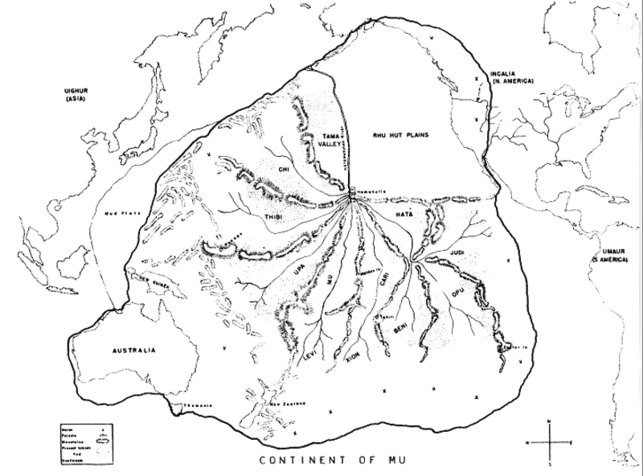 When the continent was rent asunder and went down, for geological reasons, that will later be explained, ridges and points of land here and there remained above water. They made islands and groups of islands, but were jagged and broken up by the volcanic workings which had occurred beneath them.
When the continent was rent asunder and went down, for geological reasons, that will later be explained, ridges and points of land here and there remained above water. They made islands and groups of islands, but were jagged and broken up by the volcanic workings which had occurred beneath them.
All these ridges and points were covered to their capacity with humanity escaped from the sinking land–their land, the Motherland of Man–which now formed the bed of seething, steaming, muddy waters surrounding them.
Having swallowed up the land with all thereon, the waters rested as if satisfied with their grim work and these waters are the Pacific Ocean. Was ever a name more ironically applied?
On these islands, in the midst of a boiling sea, the remnants of Mu’s population huddled, waiting for the terrific quakes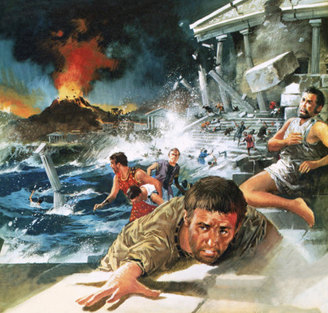 to abate. They had seen their temples and palaces, their ships and their roads go crashing down, to be swallowed by the ocean. Nearly the entire population had been engulfed by the catastrophe. The few alive, all that were left of the Motherland of Man, discovered they were destitute. They had nothing–no tools, no clothing, no shelter; little land, no food. Around them hissed and seethed the boiling waters that had rushed into the center of the fiery pit; above them dense clouds of steam, smoke and ashes cut off the friendly light, making an impenetrable darkness. The despairing shrieks of their comrades who had perished in chaos still rang in their ears. It was a scene of horror for the survivors, who found themselves facing death by starvation and exposure. Few were able to survive the dreadful ordeal and most of them perished miserably.
to abate. They had seen their temples and palaces, their ships and their roads go crashing down, to be swallowed by the ocean. Nearly the entire population had been engulfed by the catastrophe. The few alive, all that were left of the Motherland of Man, discovered they were destitute. They had nothing–no tools, no clothing, no shelter; little land, no food. Around them hissed and seethed the boiling waters that had rushed into the center of the fiery pit; above them dense clouds of steam, smoke and ashes cut off the friendly light, making an impenetrable darkness. The despairing shrieks of their comrades who had perished in chaos still rang in their ears. It was a scene of horror for the survivors, who found themselves facing death by starvation and exposure. Few were able to survive the dreadful ordeal and most of them perished miserably.
A portion of these unsubmerged fragments of the lost continent we know today as the South Sea Islands, and some of their inhabitants can claim, as remote ancestors, the people of Mu.
After a period of days the atmosphere was somewhat cleared of the smoke and sulphurous fumes. The sun, breaking through the veil of clouds, looked down on the scene. The newly formed islands were seen thronged with appalled men and women–those who were lucky or unlucky enough still to be alive. Pitiful looking beings they must have 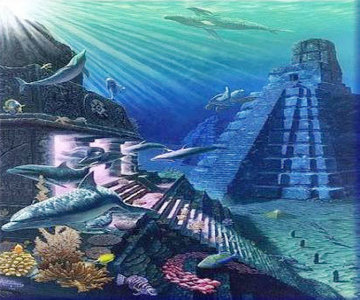 been, these survivors of the world’s greatest catastrophe since the flood of Biblical fame. One can picture some despairingly wringing their hands, others clinging together, dumb and motionless, reason gone, staring with unseeing eyes at where had once been a continent.
been, these survivors of the world’s greatest catastrophe since the flood of Biblical fame. One can picture some despairingly wringing their hands, others clinging together, dumb and motionless, reason gone, staring with unseeing eyes at where had once been a continent.
What had become of that fair land? It lay deep beneath the waters of the Pacific Ocean. Where man had reigned supreme was now the abode of fishes, the haunt of uncanny, creeping things. Seaweeds would grow where flowers had raised their faces to the sun: coral polyps would build their reefs on the spots where man’s busy hands had reared palaces. Out of the tens of millions that had once swarmed the streets of the vanished cities, only a pitiful handful of human beings remained on the newly formed islands that were otherwise barren of all life. All was lost. What remained for them? Nothing except slow starvation. They were crowded together on tiny specks of land, thousands of miles from the mainland, without boats, ships or food.
Under such circumstances it may easily be imagined what happened. Many, of course, were hopelessly insane, driven mad by sheer horror; others prayed for death to relieve them from a strain that was intolerable. To exist, one thing alone was left them: to go down into the lowest depths of savagery, and, for a time at least, live upon one another.
Skins of animals, if any remained, and the leaves of coarse foliage must, in future, be their dress. 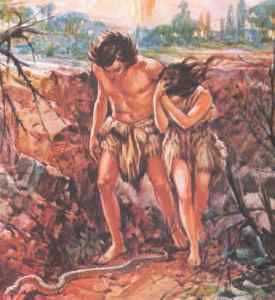 Stones, spears and arrows must be their weapons of defense and offense. Their cutting tools must be fashioned from flints and shells. But the primary thing was where to get food? No doubt many died from exposure, fright and hunger, and as these died, their bodies became the food of survivors. In this manner, began the first cannibalism and savagery. Thus the survivors of the highest civilization descended to the lowest savagery which has continued on through the ages.
Stones, spears and arrows must be their weapons of defense and offense. Their cutting tools must be fashioned from flints and shells. But the primary thing was where to get food? No doubt many died from exposure, fright and hunger, and as these died, their bodies became the food of survivors. In this manner, began the first cannibalism and savagery. Thus the survivors of the highest civilization descended to the lowest savagery which has continued on through the ages.
One may imagine the loathing and repugnance that these cultured beings must have had for such food, and we may believe that many died before they could force themselves to partake of it. Gradually, however, as generation followed generation through the long procession of years, the poor islanders sank lower and lower until even traditions of their past, which at first were religiously kept and handed down to posterity, became dim and at last forgotten. Their former greatness was erased from their minds as completely as the treacherous waters of the Pacific had wiped away Mu, but, forgotten though this past is by the islanders, marks have remained among them for future identification, thus carrying out an unvarying law.
I have mentioned that a veil of darkness was cast over mankind by the destruction of Mu; this I mean in a comparative sense only. The colonial empires, for a time, carried on the civilization of the motherland, but without her aid they gradually declined, then flickered out.
It is from those ashes the new and present civilization has arisen.
Excerpt from The Lost Continent of Mu
See full pdf download here.
Posted in Lemuria, Other Topics, True History of Manwith comments disabled.

